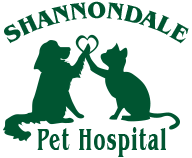Educational Articles
-
E-cigarettes are battery-operated devices used to create and inhale an aerosol composed of nicotine, flavorings, and other chemicals. If a companion animal ingests an e-liquid, signs of nicotine poisoning occur rapidly. The nicotine associated with e-cigarettes, even without tobacco, poses a serious health threat to dogs and cats.
-
Ear canal tumors are abnormal growths that can develop from any part of the ear canal (the skin, the glands of the skin that produce earwax and oil, and the underlying connective tissues, muscles, and bones). Initially, these tumors may appear as one or more pink, white, or purple nodular masses in the ear canal. If benign, they may grow to a certain size and may or may not be problematic. If malignant, they may grow, ulcerate (break open) and bleed, and nearly always become infected, causing recurrent or chronic ear infections. The treatment of choice for ear canal tumors is surgical excision.
-
Ear cleansing/drying products are used over-the-counter to treat and prevent ear infections in many species of pets. They come as a liquid solution that is used topically within the ear canal and are typically used in the ears after debris and wax have been removed using a cerumenolytic cleanser.
-
Ear infections are less common in cats than dogs, and it is essential to determine the underlying cause. Ear mites are the most common cause, but tumors or foreign bodies may also be present. Your veterinarian will need to examine your cat and likely perform tests to determine the best course of treatment. The prognosis is good if the underlying cause is diagnosed and treated.
-
Infection of the external ear canal (outer ear infection) is called otitis externa and is one of the most common types of infections seen in dogs. Nearly all ear infections that are diagnosed and treated can be successfully managed. However, if an underlying cause remains unidentified and untreated, the outcome is less favorable.
-
The ear mite is a surface mite that lives on cats, dogs, rabbits, and ferrets. It is usually found in the ear canal, but can also live on the skin surface. Mites are barely visible to the naked eye. Clinical signs of infestation may include ear irritation leading to scratching at the ears or head shaking, dark discharge from the ear, areas of hair loss from self-trauma, a crusted rash around or in the ear, or aural hematoma.
-
Echinacea is given by mouth and is used over the counter and off label to improve immune system function and reduce inflammation. Give as directed by your veterinarian. Side effects are uncommon but may include vomiting and diarrhea. Do not use in pets that are allergic to it. If a negative reaction occurs, please call your veterinary office.
-
Echinococcosis refers to being infected with a tapeworm of the genus Echinococcus and is primarily a parasite of coyotes and foxes. Infected cats are usually asymptomatic, but in both cats and humans the parasite can cause large cysts to form within the lungs and liver. E.multilocularis is treated with praziquantel and in most cases the prognosis is good.
-
Echinococcosis refers to being infected with a tapeworm of the genus Echinococcus and is primarily a parasite of coyotes and foxes. Infected dogs are usually asymptomatic, but in both dogs and humans the parasite can cause large cysts to form within the lungs and liver. E.multilocularis is treated with praziquantel and in most cases the prognosis is good.
-
Eclampsia, also referred to as hypocalcemia or puerperal tetany, is an emergency medical condition associated with a life-threatening drop in blood calcium levels that occurs in nursing mothers. Mothers that are especially attentive to their kittens seem to be more likely to develop eclampsia. Signs and treatment are discussed.


